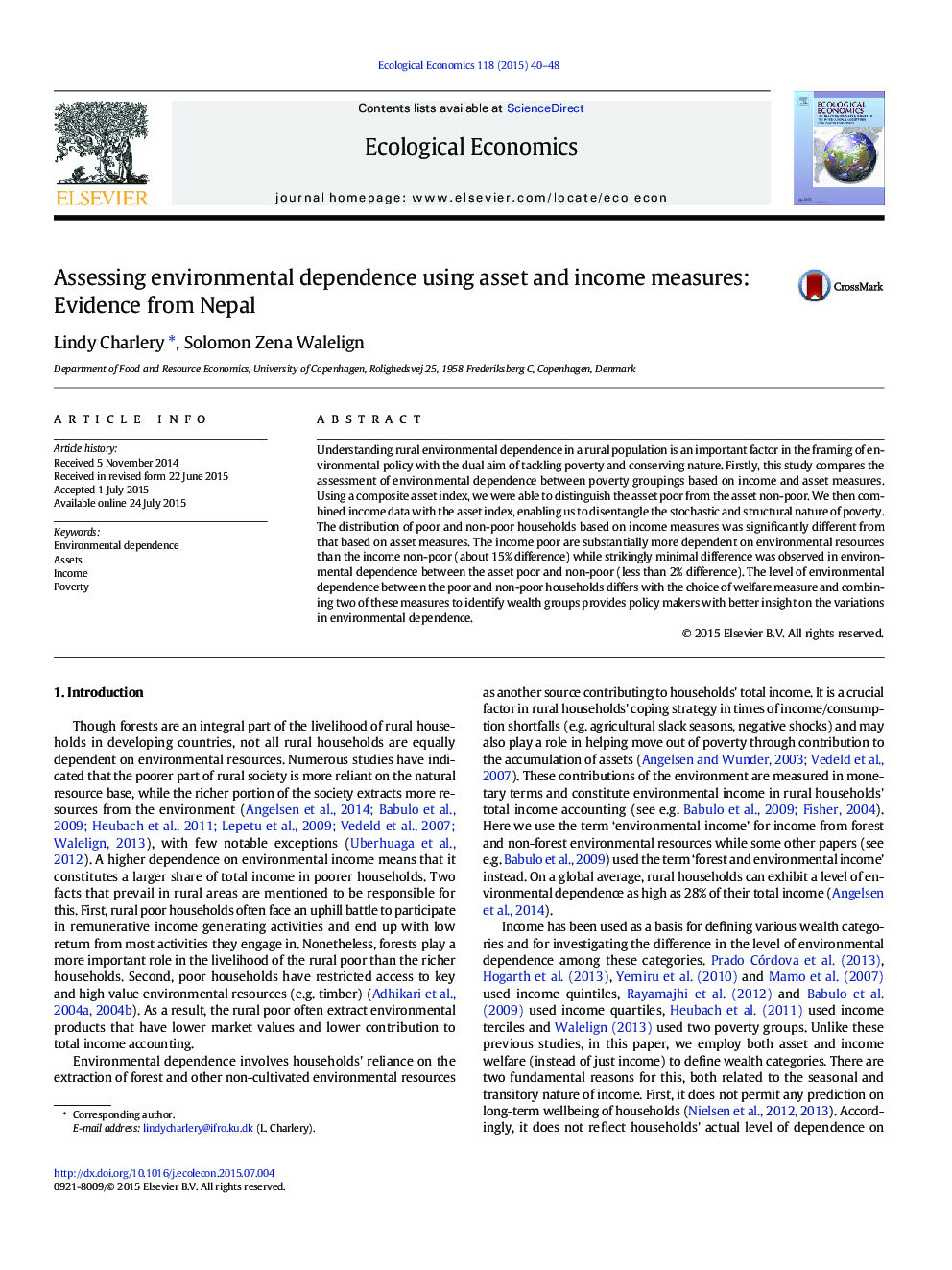| Article ID | Journal | Published Year | Pages | File Type |
|---|---|---|---|---|
| 5049357 | Ecological Economics | 2015 | 9 Pages |
â¢Distributions of poor and non-poor households vary with choice of welfare measure.â¢Income poor are more reliant on environmental resources than income non-poor.â¢Difference in environmental reliance between asset poor and non-poor is below 2%.â¢The choice of welfare measure influences results on rural environmental reliance.â¢A combination of income and asset welfare measures is more policy informative.
Understanding rural environmental dependence in a rural population is an important factor in the framing of environmental policy with the dual aim of tackling poverty and conserving nature. Firstly, this study compares the assessment of environmental dependence between poverty groupings based on income and asset measures. Using a composite asset index, we were able to distinguish the asset poor from the asset non-poor. We then combined income data with the asset index, enabling us to disentangle the stochastic and structural nature of poverty. The distribution of poor and non-poor households based on income measures was significantly different from that based on asset measures. The income poor are substantially more dependent on environmental resources than the income non-poor (about 15% difference) while strikingly minimal difference was observed in environmental dependence between the asset poor and non-poor (less than 2% difference). The level of environmental dependence between the poor and non-poor households differs with the choice of welfare measure and combining two of these measures to identify wealth groups provides policy makers with better insight on the variations in environmental dependence.
